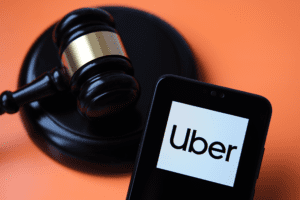What are the big 5 insurance companies?
What are the big 5 insurance companies?
This can lower or even outweigh potential returns. #1 Berkshire Hathaway (BRK. A) #2 Ping An Insurance (Group) Co. of China Ltd. (PNGAY) #3 AXA SA (AXAHY) #4 China Life Insurance Co. Ltd. … #5 Allianz SE (ALIZY) #6 Assicurazioni Generali (ARZGY) #7 The People’s Insurance Co. (Group) of China Ltd. … #8 Aviva PLC (AVVIY) More items…
Who owns Blue Cross Blue Shield?
The Blue Cross Blue Shield Association is a national association of 34 independent, community-based and locally operated Blue Cross Blue Shield companies. The Association owns and manages the Blue Cross and Blue Shield trademarks and names in more than 170 countries around the world.
Did UnitedHealthcare buy Humana?
United HealthCare and Humana, two of the nation’s largest for-profit managed care companies, have agreed to a $5.5 billion merger. The resulting company will operate as United HealthCare in 48 states and Puerto Rico. Mar 30, 2021
What is a disadvantage of a PPO plan?
Disadvantages of PPO plans Typically higher monthly premiums and out-of-pocket costs than for HMO plans. More responsibility for managing and coordinating your own care without a primary care doctor. Jul 1, 2019
What is the largest HMO in the United States?
That Kaiser, the nation’s oldest and largest HMO, could be viewed so differently by different people seems bizarre at first blush. But Kaiser is in many ways a giant mirror that reflects the struggles and uncertainties of the evolving American healthcare system. Aug 25, 1997
Are PPO plans worth it?
A PPO gives you increased flexibility and allows you to bypass seeing a primary care physician, every time you need specialty care. So, if you are a heavy healthcare user or have a large family, the flexibility of a PPO plan may be worth it. Nov 17, 2020
Is a 1000 dollar deductible good?
A $1,000 deductible is better than a $500 deductible if you can afford the increased out-of-pocket cost in the event of an accident, because a higher deductible means you’ll pay lower premiums. Choosing an insurance deductible depends on the size of your emergency fund and how much you can afford for monthly premiums. Jan 26, 2022
What is a good out-of-pocket maximum?
2018: $7,350 for an individual; $14,700 for a family. 2019: $7,900 for an individual; $15,800 for a family. 2020: $8,150 for an individual; $16,300 for a family.
What does out-of-pocket max mean?
The most you have to pay for covered services in a plan year. After you spend this amount on deductibles, copayments, and coinsurance for in-network care and services, your health plan pays 100% of the costs of covered benefits.
What are the pros and cons of an EPO?
Pros and Cons of an EPO Low monthly premiums: EPOs tend to have lower premiums than Preferred Provider Organizations (PPOs), though they’re higher than Health Maintenance Organization (HMO) premiums. Large networks: They generally offer a wider selection of care providers than HMOs.
What does it mean 10 coinsurance after deductible?
Coinsurance is often 10, 30 or 20 percent. For instance, with 10 percent coinsurance and a $2,000 deductible, you would owe $2,800 on a $10,000 operation – $2,000 for the deductible and then $800 for the coinsurance on the remaining $8000. Nov 29, 2018
What is PPO good for?
A PPO is generally a good option if you want more control over your choices and don’t mind paying more for that ability. It would be especially helpful if you travel a lot, since you would not need to see a primary care physician. Oct 1, 2017
How long do root canals last?
Root Canal Treatment Success Rate According to this report, 98 percent of root canals last one year, 92 percent last five years, and 86 percent last ten years or longer. Molars treated by endodontists had a 10 year survival rate, significantly higher than that of molars treated by general dentists. Jun 3, 2021
Is it better to extract or root canal?
Root Canal vs Tooth Extraction. A root canal has a better success rate than a tooth extraction because there are little to no future complications associated with the procedure. Root canals are performed by dentists to clean and restore an infected tooth. There is no need to extract or remove the tooth.
Can I wait a week for a root canal?
You must undergo a root canal within a few weeks to fully eliminate the infection and save your tooth. In general, a root canal typically takes about two hours to complete, but it can require subsequent visits depending on the severity of the damage. Aug 24, 2020



